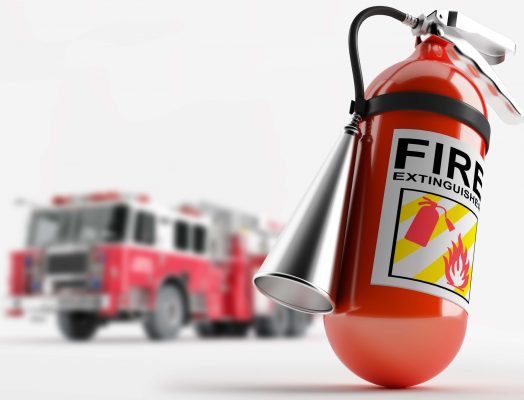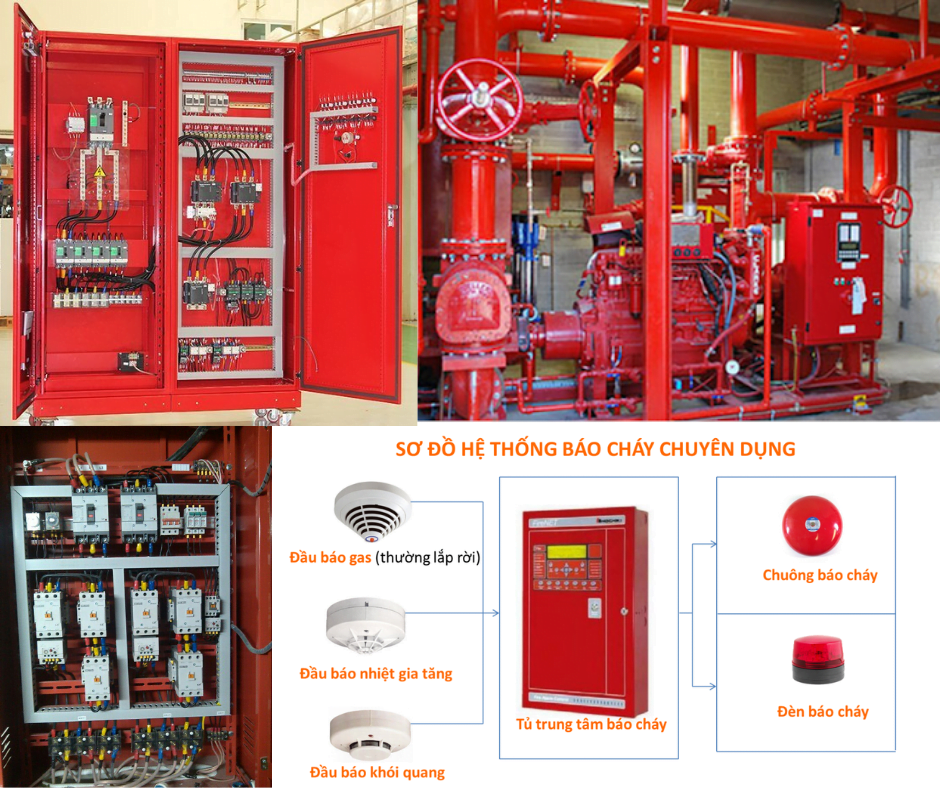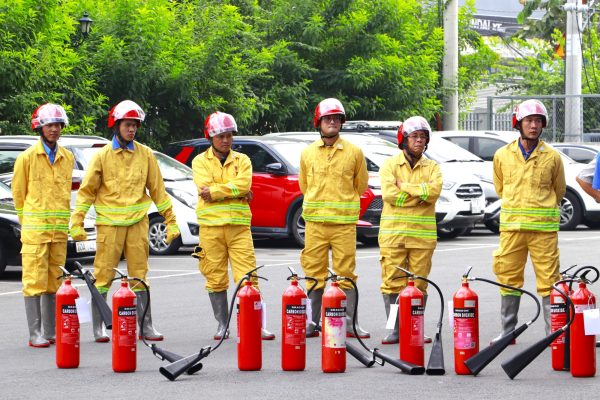To ensure the safety of production activities and human life, factories must strictly adhere to fire prevention and fighting (PCCC) regulations. Here are the main points of the latest factory PCCC regulations according to the Fire Prevention and Fighting Law 2020 and Decree 79/2014/NĐ-CP:
Design safety conditions

Construction site
Safe distance: Must comply with the regulations in National Standard TCVN 4514:2012 on fire prevention and fighting safety distances for construction works.
Other requirements: Avoid areas with a high risk of fire and explosion, and be easy to access for firefighting and rescue.
Structural construction
Fire resistance: Must meet the requirements of National Standard TCVN 9383:2012 on fire resistance.
Fire retardancy: Use materials and structures that have fire retardant properties according to regulations.
Emergency exit system
Number: Ensure that there are enough exits for all occupants of the factory to evacuate safely in the shortest possible time.
Size: Doors and emergency exits must be of a suitable size to accommodate the flow of people moving through them.
Location: Install emergency exits in easily identifiable locations that are convenient for movement.
Signage: Place emergency exit signage according to regulations.
Ventilation system
Capacity: Ensure an adequate supply of fresh air for workers and remove toxic gases and heat generated during the production process.
Ventilation vents: Install ventilation vents of appropriate size, evenly distributed throughout the factory.
Smoke exhaust system: Install an automatic or manual smoke exhaust system in areas with a high risk of fire and explosion.
Electrical system
Safe installation: Use conduits, electrical cabinets, and electrical wires that are appropriate for power usage.
Overload protection: Install lightning arresters, overload protection devices, and short circuit protection devices.
Periodic inspection: Regularly inspect and maintain the electrical system to ensure safety.
Lightning protection system
Install a lightning protection system: In accordance with the regulations of National Standard TCVN 8385:2012.
Regular inspection: Regularly inspect and maintain the lightning protection system to ensure effective operation.
Fire alarm and fire fighting system

Automatic Fire Alarm System
Installation: Detect fire early and promptly alert occupants to evacuate safely.
System Type: Use a fire alarm system that is suitable for the characteristics of the factory.
Connection: Connect to an automatic fire suppression system or a notification and control system.
Firefighting vehicles
Use of fire-resistant materials
Materials:
- Employ fire-resistant materials for elements with high fire risk, such as roofs, partitions, and doors.
- Prioritize materials that meet relevant fire safety standards and certifications.
- Consider factors like fire resistance rating, thermal conductivity, and compatibility with the overall building structure.
Construction:
- Adhere to strict construction guidelines and techniques to ensure the effectiveness of fire-resistant materials.
- Engage qualified professionals with expertise in fire-resistant construction methods.
- Ensure proper installation, integration, and sealing of fire-resistant materials to maintain their integrity and effectiveness.
Fire protection signs

Content
Installation location
Grassroots fire protection team

Detect fire early and give timely alarm.
Responsibility
Responsibility for fire prevention management
Owners
Fire protection officer
Note:
This is just a summary of the key points of the latest factory fire prevention and fighting regulations. For full details, please refer to the relevant legal documents.
In addition, you should regularly update yourself on the latest fire prevention and fighting regulations to ensure the safety of your factory.
In addition, you should also note the following points:
- Organize regular fire prevention and fighting training for staff, employees, and workers on fire prevention and fighting knowledge and skills.
- Regularly inspect fire prevention and fighting systems to ensure that they are always working effectively.
- Have a fire prevention and fighting plan that is tailored to the characteristics of the factory.
- Use electricity safely to avoid fire and explosion hazards caused by electricity.
- Keep the factory clean and tidy to minimize the presence of flammable and explosive materials.
By strictly implementing fire prevention and fighting regulations, you can contribute to the safety of yourself, your property, and the community.
Thank you for reading this article. Please follow us on our WEBSITE or social media platforms such as FACEBOOK, LINKEDIN, and YOUTUBE for new articles with useful information.
Đọc Thêm: QUY TRÌNH VẬN HÀNH CẦU TRỤC AN TOÀN VÀ HIỆU QUẢ NHẤT
Đọc Thêm: CÁC KỸ HIỆU, CHỈ DẪN TRONG QUÁ TRÌNH VẬN HÀNH CẦU TRỤC

